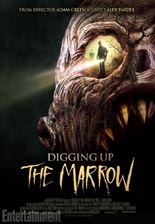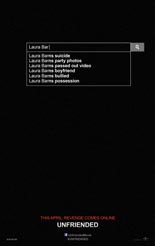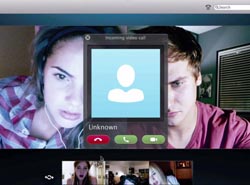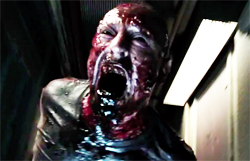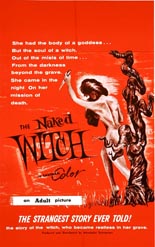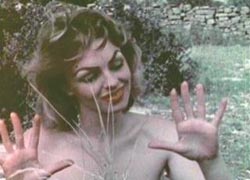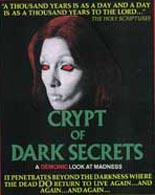
 It takes a bit for Jack Weis’ Crypt of Dark Secrets to achieve any sort of lucidity, as the NOLA-lensed, swamp-set “whore-or” indie begins wordlessly, with a witchy woman writhing in nature for a good two minutes before finally levitating up — and up against — a tree trunk. She is Damballa (Maureen Ridley), the rumored mystical “woman who lives in the lake and turns into a snake.” (Local legend ignores or fails to make clear whether she’s immune to splinters in the rear.)
It takes a bit for Jack Weis’ Crypt of Dark Secrets to achieve any sort of lucidity, as the NOLA-lensed, swamp-set “whore-or” indie begins wordlessly, with a witchy woman writhing in nature for a good two minutes before finally levitating up — and up against — a tree trunk. She is Damballa (Maureen Ridley), the rumored mystical “woman who lives in the lake and turns into a snake.” (Local legend ignores or fails to make clear whether she’s immune to splinters in the rear.)
What’s this have to do with anything? Well, cut to Sheriff Harrigan (Wayne Mack, The Savage Bees) discussing Damballa with Charlie the librarian (Donn Davison, Blood Beast of Monster Mountain), who found some of them there facts about her in one of those book thingies: “It’s very interesting. There’s pictures,” says Charlie, who had to go through “damn near every one” of nearly 6,000 volumes to find it, because apparently the Dewey Decimal system had yet to make it to their neck of the woods.
 What’s this have to do with anything? Well, Harrigan boats over to Haunted Island, Damballa’s stomping grounds, to meet Ted (Ronald Tanet of Weis’ better-known Mardi Gras Massacre), a Vietnam vet who loudly tells everyone that he keeps his cash literally in a breadbox.
What’s this have to do with anything? Well, Harrigan boats over to Haunted Island, Damballa’s stomping grounds, to meet Ted (Ronald Tanet of Weis’ better-known Mardi Gras Massacre), a Vietnam vet who loudly tells everyone that he keeps his cash literally in a breadbox.
What’s this have to do with anything? Well, three ne’er-do-well rednecks take advantage of this financial tip, despite Damballa’s supposed presence there; says one, “I ain’t afraid of no ghost and no voodoo and no snake lady!” When the gents rob Ted — oh, and kill him in the process — that “snake lady” appears, fully naked and partially oily, to revive our fallen solider. Upon resurrection, he notes, “You’re the girl that lives in the lake. The one who turns into a snake,” as if the first sentence wasn’t specific enough and required a second to narrow the field.
What’s this have to do with anything? Yeah, damn good question, because it’s ol’ Damballa who does so much of the revengin’. And it’s a hoot to see her do that, because when she does, her eyes crudely go all-white, as if Weis cut them out frame by frame with an X-Acto knife — which he probably did, assuming the budget could afford one. The man is no director — nor writer nor producer — yet against all odds, Crypt is exceedingly well-photographed (if you can ignore that everyone appears in a shade of Oompa-Loompa orange). How it can look so good when the movie falls short in every other area — especially acting, since the leads speak … as if they … memorized their … lines only a … few words at a … time — is its only true Dark Secret. —Rod Lott

